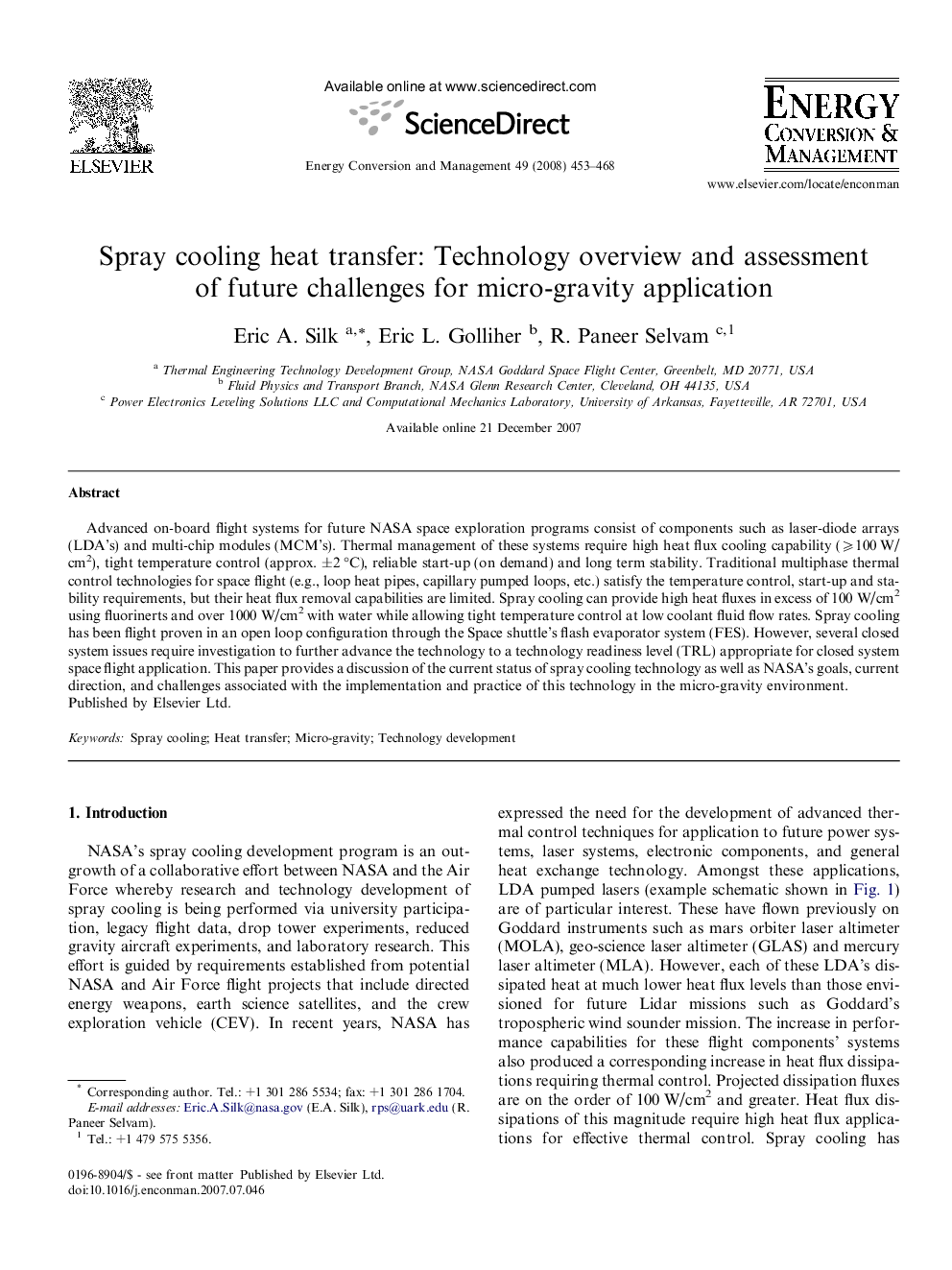| Article ID | Journal | Published Year | Pages | File Type |
|---|---|---|---|---|
| 772874 | Energy Conversion and Management | 2008 | 16 Pages |
Advanced on-board flight systems for future NASA space exploration programs consist of components such as laser-diode arrays (LDA’s) and multi-chip modules (MCM’s). Thermal management of these systems require high heat flux cooling capability (⩾100 W/cm2), tight temperature control (approx. ±2 °C), reliable start-up (on demand) and long term stability. Traditional multiphase thermal control technologies for space flight (e.g., loop heat pipes, capillary pumped loops, etc.) satisfy the temperature control, start-up and stability requirements, but their heat flux removal capabilities are limited. Spray cooling can provide high heat fluxes in excess of 100 W/cm2 using fluorinerts and over 1000 W/cm2 with water while allowing tight temperature control at low coolant fluid flow rates. Spray cooling has been flight proven in an open loop configuration through the Space shuttle’s flash evaporator system (FES). However, several closed system issues require investigation to further advance the technology to a technology readiness level (TRL) appropriate for closed system space flight application. This paper provides a discussion of the current status of spray cooling technology as well as NASA’s goals, current direction, and challenges associated with the implementation and practice of this technology in the micro-gravity environment.
